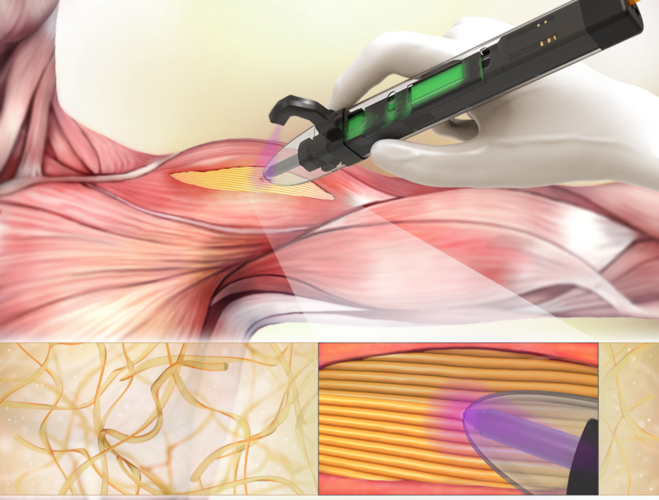
The bioprinter, developed by Dr. Ali Tamayol, associate professor in the School of Dental Medicine biomedical engineering department, enables surgeons to deposit scaffolds to help support cellular and tissue growth directly into the defect sites within weakened skeletal muscles.
Netherlands team demonstrates rapid 3D bioprinting
Your questions answered: 3D bioprinting
The scaffolds from the bioprinter adhere precisely to the surrounding tissues of the injury and mimic the properties of the existing tissue; eliminating the need for any suturing. "The printer is robust and allows proper filling of the cavity with fibrillar scaffolds in which fibers resemble the architecture of the native tissue," said Tamayol.
The system prints gelatin-based hydrogels - known as "bioink" - that have been proven to be effective in adhering to defect sites of mice with volumetric muscle loss injury. The mice showed a significant increase in muscle hypertrophy following Tamayol's therapy. "This is a new generation of 3D printers than enables clinicians to directly print the scaffold within the patient's body," said Tamayol.
Current methods for reconstructive surgery have been largely inadequate in treating volumetric muscle loss and 3D printing technology has emerged as a promising solution to this challenge.
Harvard plastic surgeon Dr. Indranil Sinha, who worked on the project with Tamayol said: "[a] good solution currently does not exist for patients who suffer volumetric muscle loss. A customisable, printed gel establishes the foundation for a new treatment paradigm can improve the care of our trauma patients."
Tamayol and Sinha have filed a patent on this technology for the treatment of musculoskeletal injuries.
This research has been funded by the National Institutes of Health and The Gillian Reny Stepping Strong Centre for Trauma Innovation and was recently published in the American Chemical Society journal.




Red Bull makes hydrogen fuel cell play with AVL
Formula 1 is an anachronistic anomaly where its only cutting edge is in engine development. The rules prohibit any real innovation and there would be...